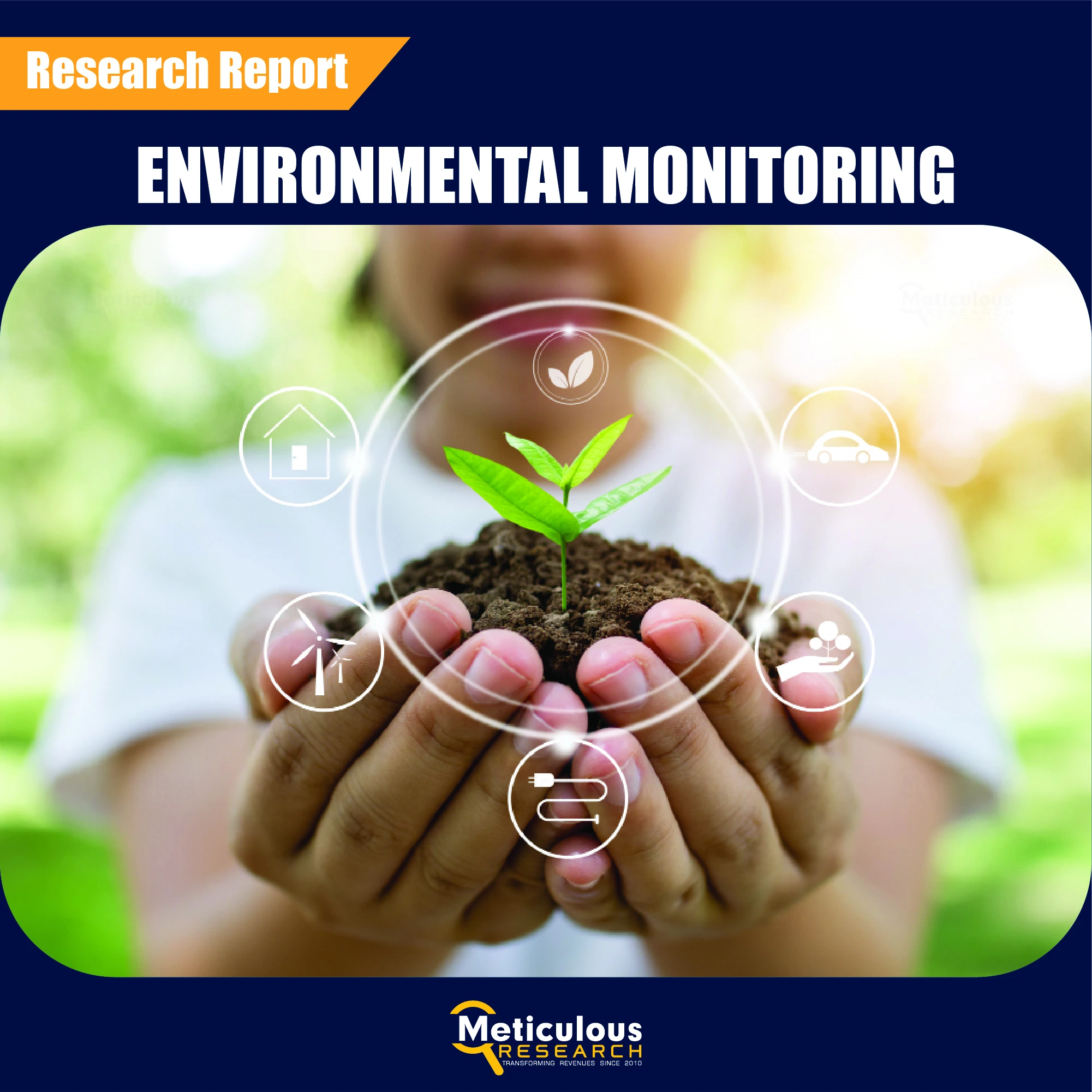
The Environmental Monitoring Market, valued at $18 billion in 2023, is projected to grow to $33.9 billion by 2031. It is expected to reach $19.3 billion in 2024, with a compound annual growth rate (CAGR) of 8.4% over the forecast period from 2024 to 2031.
Environmental monitoring plays a crucial role in maintaining and improving the quality of our surroundings. It involves systematically sampling air, water, soil, noise, and biological components to assess environmental conditions. By doing so, it provides critical insights into the state of ecosystems and human habitats. The data collected is used for various purposes, including environmental impact assessments, establishing baselines and trends, testing models, educating the public, and ensuring compliance with environmental regulations. As global environmental challenges grow, the role of environmental monitoring is more vital than ever.
Download Sample Copy: https://www.meticulousresearch.com/download-sample-report/cp_id=5024
Rising Global Concerns Drive Investments in Environmental Sustainability
Governments and regional bodies across the globe are becoming increasingly aware of environmental degradation and its potential consequences. In response, many have implemented policies aimed at accelerating the shift toward a low-carbon economy, with a strong focus on sustainability. Green investment banks (GIBs) have emerged as key players in this transformation, providing financial support for projects that reduce greenhouse gas (GHG) emissions. Institutions like the U.K. Green Investment Bank, GreenTech Malaysia, Connecticut Green Bank, and the Clean Energy Finance Corporation (CEFC) are channeling funds into renewable energy, waste reduction, and other eco-friendly initiatives to promote sustainable development.
These initiatives are bolstered by a variety of government regulations and international agreements designed to address pressing environmental concerns such as air and water pollution, hazardous waste management, and climate change. However, no single policy can solve all these issues. As a result, a broad spectrum of environmental policies is being developed and refined to meet emission reduction targets in the years ahead. The success of these policies hinges on precise environmental monitoring, which helps gauge their effectiveness by tracking pollutant levels over time.
Technological Advancements Revolutionizing Environmental Monitoring
Advances in technology are rapidly transforming the environmental monitoring landscape, making it easier and more accurate to collect and analyze environmental data. The adoption of cutting-edge tools like the Internet of Things (IoT) and nanotechnology has introduced innovative approaches to monitoring and managing environmental conditions.
IoT and Real-Time Data Monitoring
IoT technology has introduced significant improvements in how we monitor environmental parameters. IoT sensors provide real-time data on water quality, air pollution, and other environmental factors, both indoors and outdoors. These sensors offer unparalleled precision and are capable of continuously monitoring environmental changes, allowing authorities to react promptly to any hazardous fluctuations. IoT-enabled systems can be integrated into a global network, connecting devices and applications for comprehensive environmental management. For instance, IoT-based water monitoring systems can detect pollution levels in rivers and lakes, while air quality sensors can alert cities to dangerous pollution spikes.
Get Customized Report: https://www.meticulousresearch.com/request-customization/cp_id=5024
IoT’s ability to continuously and systematically collect vast amounts of data enables deeper analysis and insight into long-term environmental trends. This data can then be used to improve public health and safety, optimize resource management, and strengthen policies to combat environmental degradation.
Nanotechnology’s Role in Enhanced Sensing
Nanotechnology, another groundbreaking advancement, offers even more possibilities in environmental monitoring. Nanomaterials, with their high surface area and reactivity, are proving to be highly effective in detecting pollutants at incredibly low concentrations. Nanosensors, for example, can identify toxic compounds at parts-per-million (ppm) or parts-per-billion (ppb) levels, providing a new level of accuracy in pollution detection.
This enhanced specificity is especially important when it comes to identifying minute quantities of hazardous substances in air, water, or soil, which might otherwise go undetected. The application of nanotechnology is helping to revolutionize how environmental contaminants are detected and addressed, giving environmental scientists more powerful tools to manage pollution.
The Growing Environmental Monitoring Market
As environmental concerns continue to rise and technology becomes more integrated into environmental science, the environmental monitoring market is poised for substantial growth. According to Meticulous Research®, the market is projected to grow at a compound annual growth rate (CAGR) of approximately 7%, reaching a value of $25.95 billion by 2028. This growth is driven by a combination of regulatory pressure, increasing public awareness, and technological innovation.
The market for environmental monitoring products is diverse, encompassing sensors, monitors, software, and data analysis tools. These products are being used across a wide range of industries, including agriculture, manufacturing, energy, and healthcare, where understanding the environmental impact is crucial. Moreover, IoT and nanotechnology will continue to push the boundaries of what is possible in environmental monitoring, making it more efficient, cost-effective, and accurate.
Buy Now: https://www.meticulousresearch.com/Checkout/68960767
Conclusion
Environmental monitoring is no longer just a regulatory requirement; it is an essential tool for safeguarding our planet’s future. As governments, businesses, and individuals become more aware of the need for sustainability, technological innovations like IoT and nanotechnology are making it easier to collect, analyze, and act upon environmental data. This is driving significant growth in the environmental monitoring market, as industries seek more effective ways to meet regulatory requirements and improve environmental conditions. With the world moving towards a more sustainable future, the importance of precise and continuous environmental monitoring will only increase, helping to ensure a healthier planet for generations to come.
Meticulous Market Research Inc.
1267 Willis St, Ste 200 Redding,
California, 96001, U.S.
USA: +1-646-781-8004
Europe : +44-203-868-8738
APAC: +91 744-7780008
Email- sales@meticulousresearch.com
Visit Our Website: https://www.meticulousresearch.com/
Connect with us on LinkedIn- https://www.linkedin.com/company/meticulous-research







